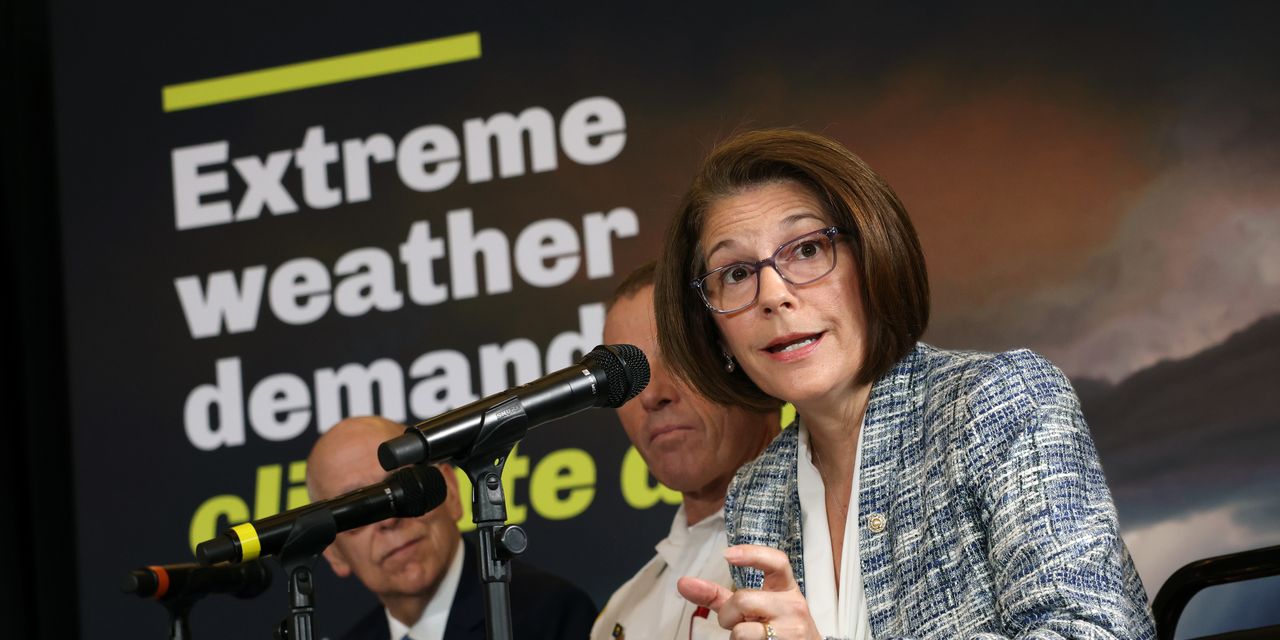Democrats are projected to retain their hold on the U.S. Senate after winning a key race in Nevada, giving President Joe Biden’s party control of at least one chamber of Congress for the next two years.
The Associated Press called Nevada’s Senate race for Democratic incumbent Catherine Cortez Masto over Republican challenger Adam Laxalt, giving Democrats a 50-seat count in the chamber. With Vice President Kamala Harris’s tie-breaking vote, and the chamber’s two independents causing with Democrats, Democrats will keep control.
The House of Representatives, meanwhile, remained undecided late Saturday but with Republicans still favored. The GOP has 211 seats to Democrats’ 203, with 218 needed for a majority. Political handicappers give Democrats just a slim chance for retaining control of the House.
Read: Democrats have 5% to 15% chance of keeping grip on House, Cook Political Report analyst says
Should Republicans win control of the House, the GOP is expected to deliver a check on Biden’s policy priorities, such as by potentially using a debt-ceiling showdown to force spending cuts.
Related: Republican lawmakers likely to target ‘woke capitalism’ after the midterm elections, analysts say
But holding the Senate gives Biden some advantages, as GOP control could have meant roadblocks for his cabinet picks or other officials, as well as limiting his capacity to shape the federal judiciary.
Now see: Biden nominating Danny Werfel to head the IRS, White House says
Democrats have had a grip on the House since the 2018 midterms. They’ve run the Senate for two years, with Vice President Harris’s constitutional role as Senate president positioning her to cast tiebreaking votes. Each party has a chance to pick up an extra vote after a Dec. 6 runoff in Georgia between Democratic Sen. Raphael Warnock and Republican challenger Herschel Walker.
Read: Georgia Senate contest expected to soon overtake Pennsylvania’s as most expensive midterm election
Democrats in the last two years have used party-line votes to push through measures such as March 2021’s stimulus law and this past summer’s package targeting healthcare, climate change and taxes.
The House switching to red from blue would fit the historical pattern in which a first-term president’s party tends to lose congressional ground in the midterms.
Republicans’ majority is expected to be narrow, however, and that’s already creating turbulence for the House GOP leadership. Some members of the House Freedom Caucus say they’re opposed to Kevin McCarthy, the current House minority leader, becoming the chamber’s next speaker.
Analysts had said voters in October and November appeared increasingly focused on issues on which Republicans have claimed high ground such as the prices of gasoline
RB00,
and other essentials, at the expense of such Democratic Party agenda items as climate change and abortion and voting rights.
Exit polls suggested that Republicans performed worse than expected because many Democrats and independents voted partly to show their disapproval of former President Donald Trump — and those voters were energized by the Supreme Court’s June decision that overturned Roe v. Wade.
Check out: Anti-Trump vote and Dobbs abortion ruling boost Democrats in 2022 election
